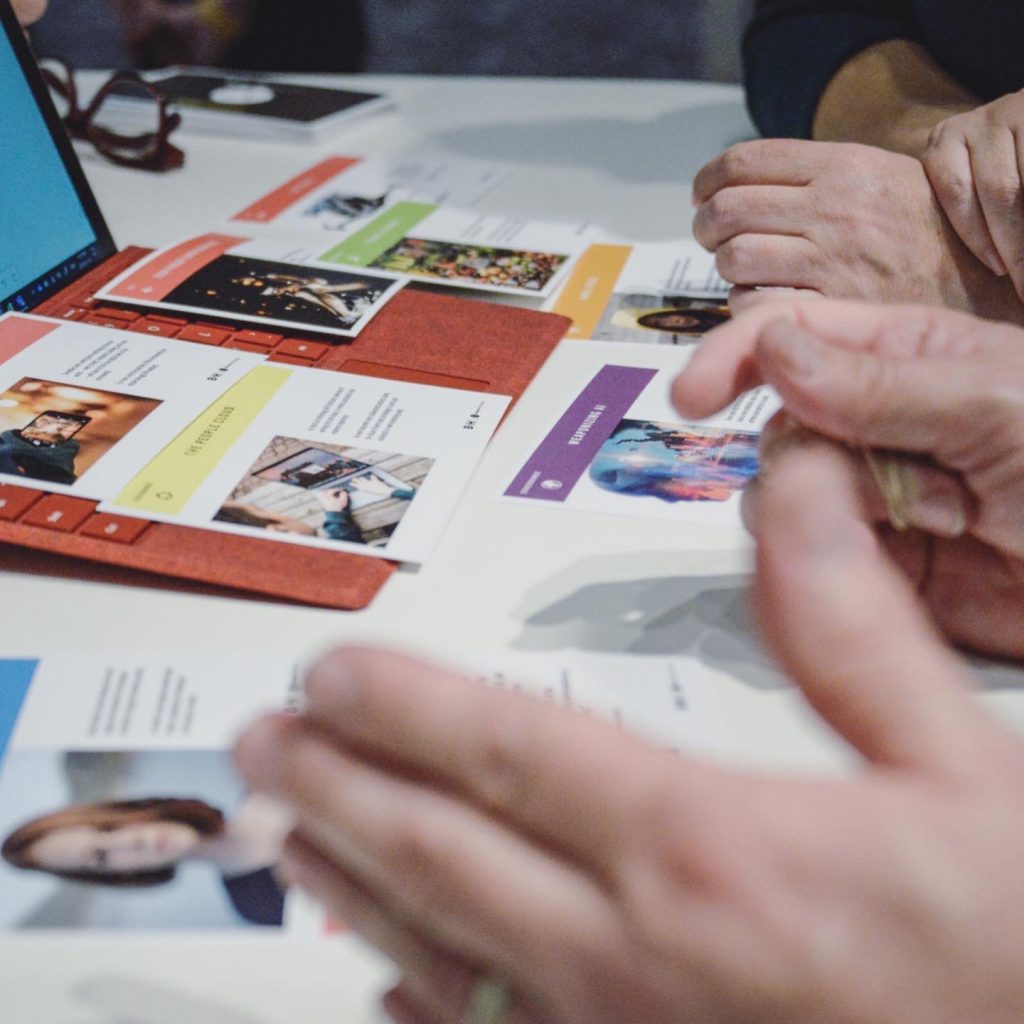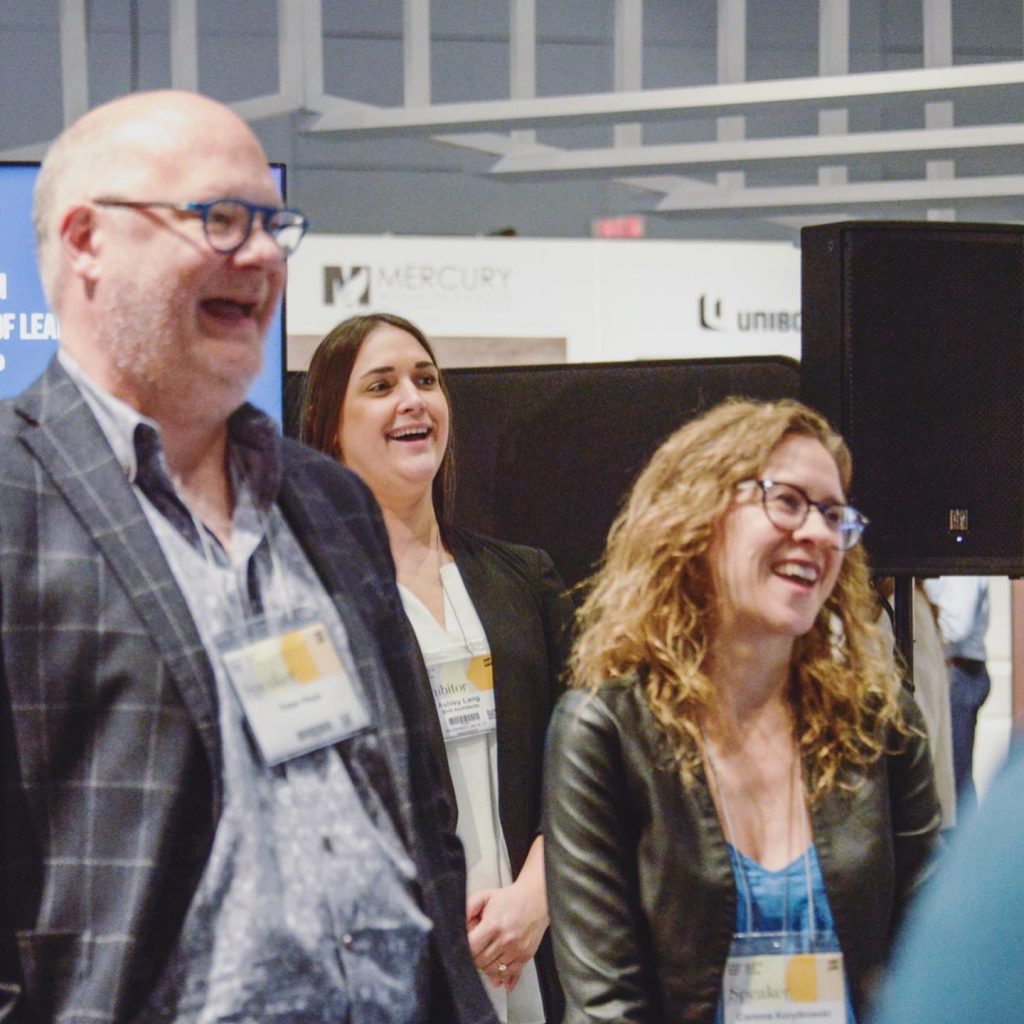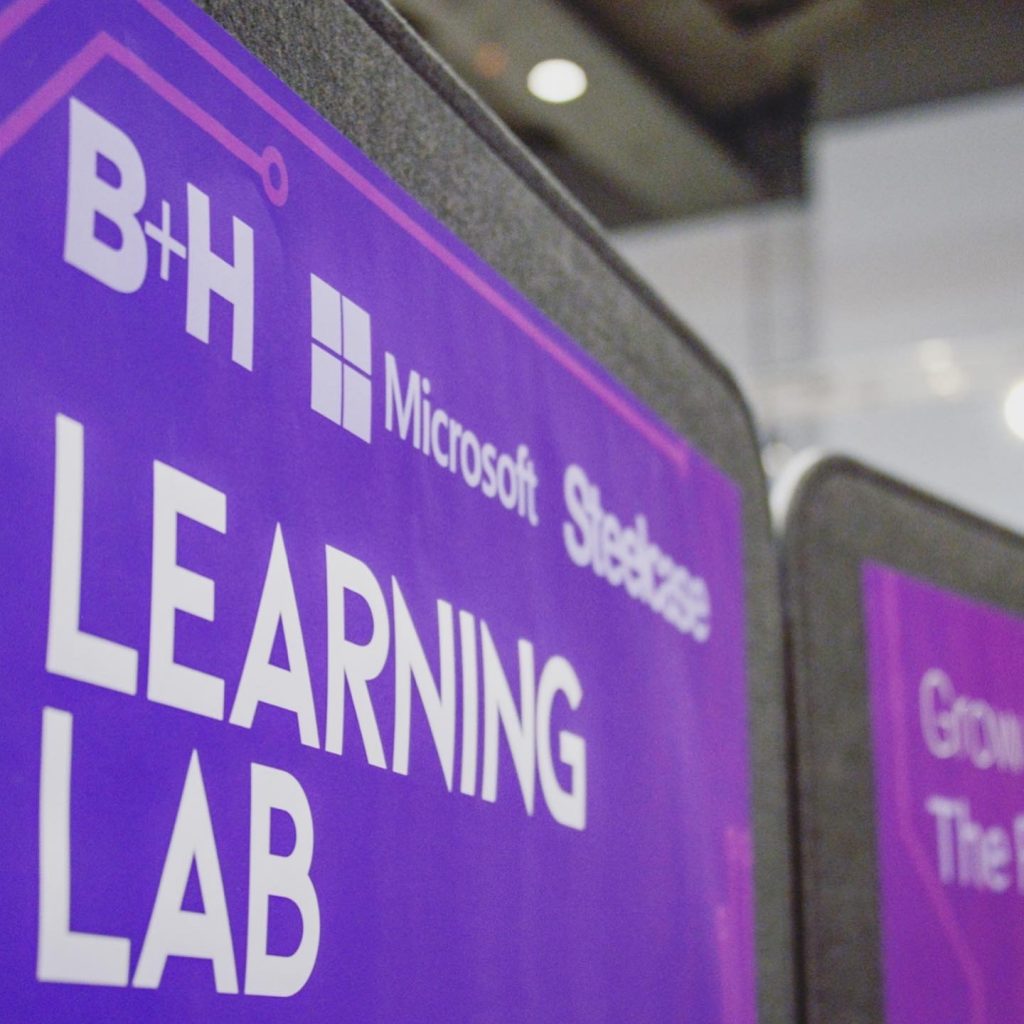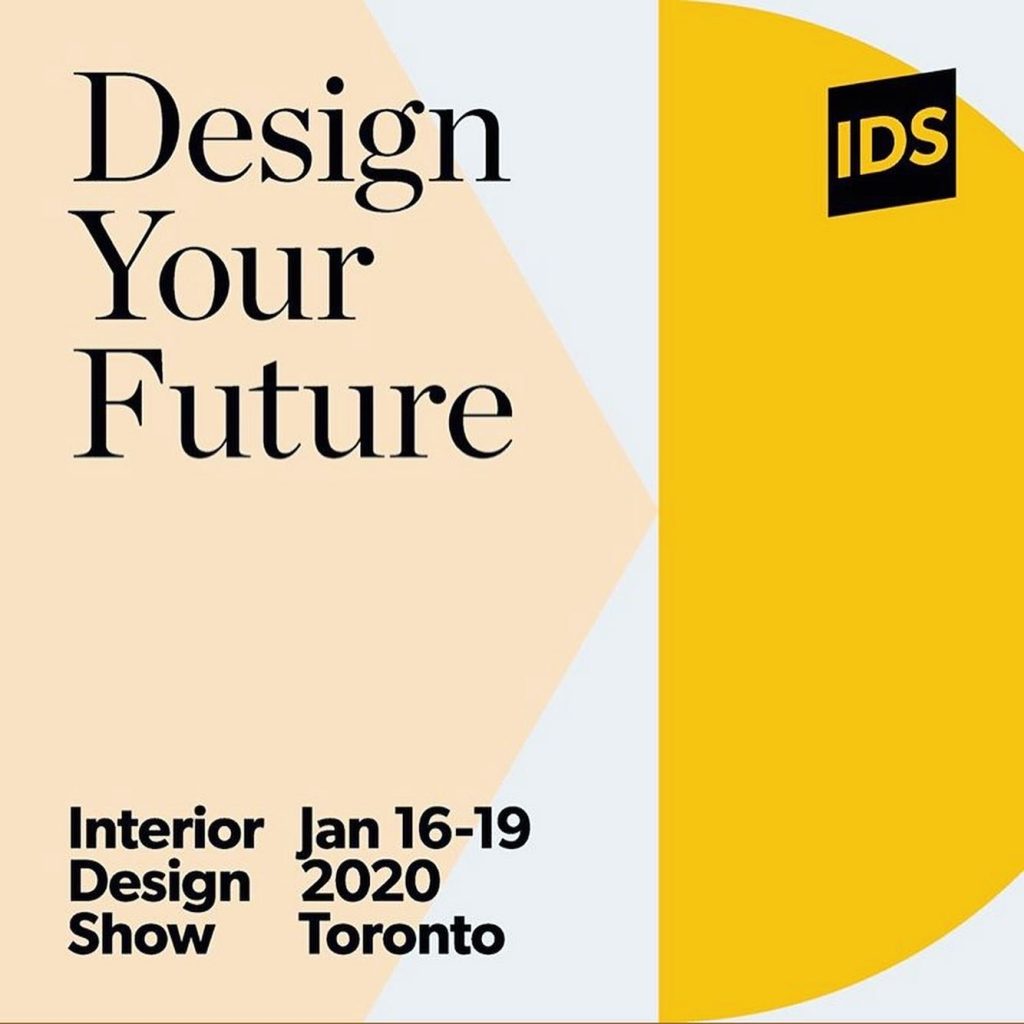Exploring the future
The world is changing quickly and without warning. So much so, that business-as-usual practices simply no longer cut it. Leaders and organizations that take a traditional approach and are slow to change will find themselves lagging behind in extremely competitive markets.
Companies that find ways to shake things up and challenge how things have always been done will provide added value to consumers and clients through products and services that are innovative, future-flexible and stand out from the crowd.
From January 16th – 19th, 2020 the Interior Design Show (IDS 2020) brought together over 53,000 of the world’s leading products, companies and change-makers to inspire and transform the future of design. Working with B+H, we invited IDS 2020 attendees to join us for a workshop in the Learning Lab to explore change catalysts across large-scale drivers to envision the future of learning. While the future of any industry or discipline is impossible to predict, we can scan macro drivers in our external environment for emerging themes to help shape future strategy efforts.
Along with my colleagues at B+H, we facilitated a workshop that began with a presentation to expose participants to approximately forty trends across macro drivers including societal, technological, economic, environmental and political issues. Participants were then asked to break off into smaller groups to select their favourite top four trends and share what they thought those trends meant for the future of learning. Many of their thoughts were also extrapolated for the future of work.
Trend deck exercises like these are the first step in engaging clients and design teams in different conversations – conversations that encourage us to look beyond what’s possible within traditional processes of design that might typically silo our thinking into one area of expertise. Following an exercise like this, we would then engage in a rapid prototyping activity to further flesh out ideas and explore how innovative thinking translates into smart space solutions. The goal is to get our teams and clients thinking differently by playing with possibilities prior to committing to a final route for a design solution.




